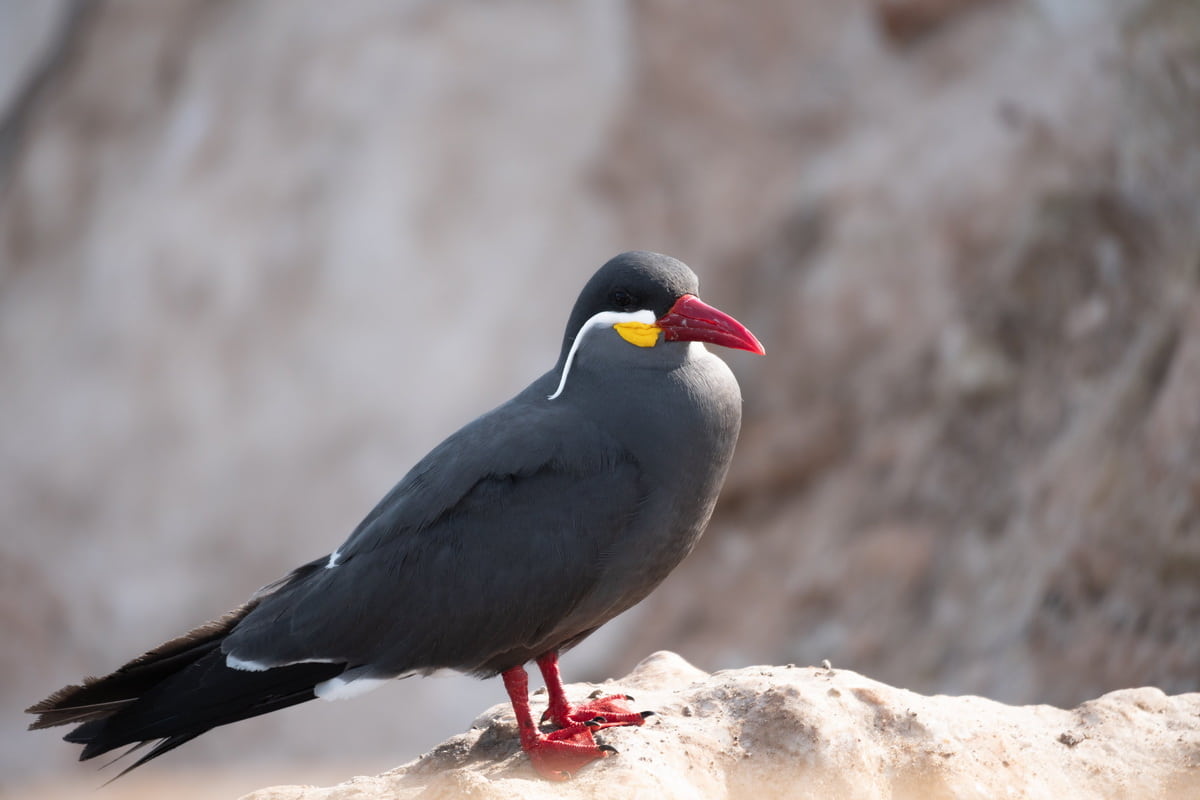Discovered in the 19th century, Inca Terns (Larosterna inca) are a visual tribute to the Inca Empire.
Residing along South America’s Pacific coast, their unique ‘moustache’ and grey plumage make them distinctive.
These seabirds’ diet, migration, and vocalizations offer key ecological insights, reflecting ocean health and climatic changes.
Join us as we uncover fun facts about Inca Terns, delving into their world of unique adaptations and survival stories along South America’s Pacific coast.
1. Unique Facial Feathers of Inca Terns
Discovered in 1861, Inca Terns are distinguished by their white facial feathers, resembling a moustache.
Developing as they mature, these feathers are more than ornamental; they signify the bird’s health and breeding potential.
Studies reveal that terns with fuller moustaches are more attractive to mates, indicating stronger genetics and better health.
This unique trait, exclusive to this species, has been a subject of interest in ornithological studies for its role in sexual selection.
2. Inca Tern Migration Patterns
Inca Terns’ migration is a recent discovery, observed intensively since the late 20th century.
They migrate along the South American coast, following the nutrient-rich Humboldt Current.
This migration is not just a search for food but a response to oceanic changes, indicating the health of marine ecosystems.
Their annual travel patterns help scientists monitor the abundance of small fish, especially anchovies, which are crucial for the local fishing industry and marine biodiversity.

Image: Fred / Pexels
3. Eating Habits of Inca Terns
The Inca Tern’s diet primarily consists of small fish, especially anchovies.
Their feeding technique, a high-velocity dive into the ocean, has been studied since the early 1900s for its efficiency and impact on fish populations.
These birds play a critical role in maintaining the balance of the marine food web.
Their foraging behavior, particularly during breeding season, provides insights into the health of the marine ecosystem they inhabit.
4. Vocalizations of Inca Terns
Inca Terns have a wide array of vocalizations, each serving a specific social purpose.
These vocal patterns, extensively studied since the mid-20th century, range from mating calls to alarm signals.
Researchers have found that their calls vary in frequency and tone depending on the context, reflecting a complex communication system.
Understanding these vocalizations offers insights into the social structure and behavior of these birds within their colonies.
5. Unusual Nesting Sites of Inca Terns
Inca Terns choose extraordinary nesting sites, often in cliffs or rocky crevices along the coast.
Discovered in the early 20th century, these sites are selected for their protection from predators and proximity to food sources.
Their preference for nesting in guano (seabird dung) deposits is unique, as these sites provide both fertility for eggs and a barrier against predators.
Studies of their nesting habits reveal insights into their adaptability and the importance of habitat conservation for their survival.
6. Color Changes in Inca Terns
The plumage of Inca Terns undergoes notable changes with age and season.
Juveniles start with duller, greyish feathers, which brighten to a striking grey and white as they mature.
During breeding season, their beak and feet turn a vibrant red, a signal of reproductive readiness.
These color changes, first documented in the late 19th century, are indicators of age, health, and breeding status, crucial for mate selection.
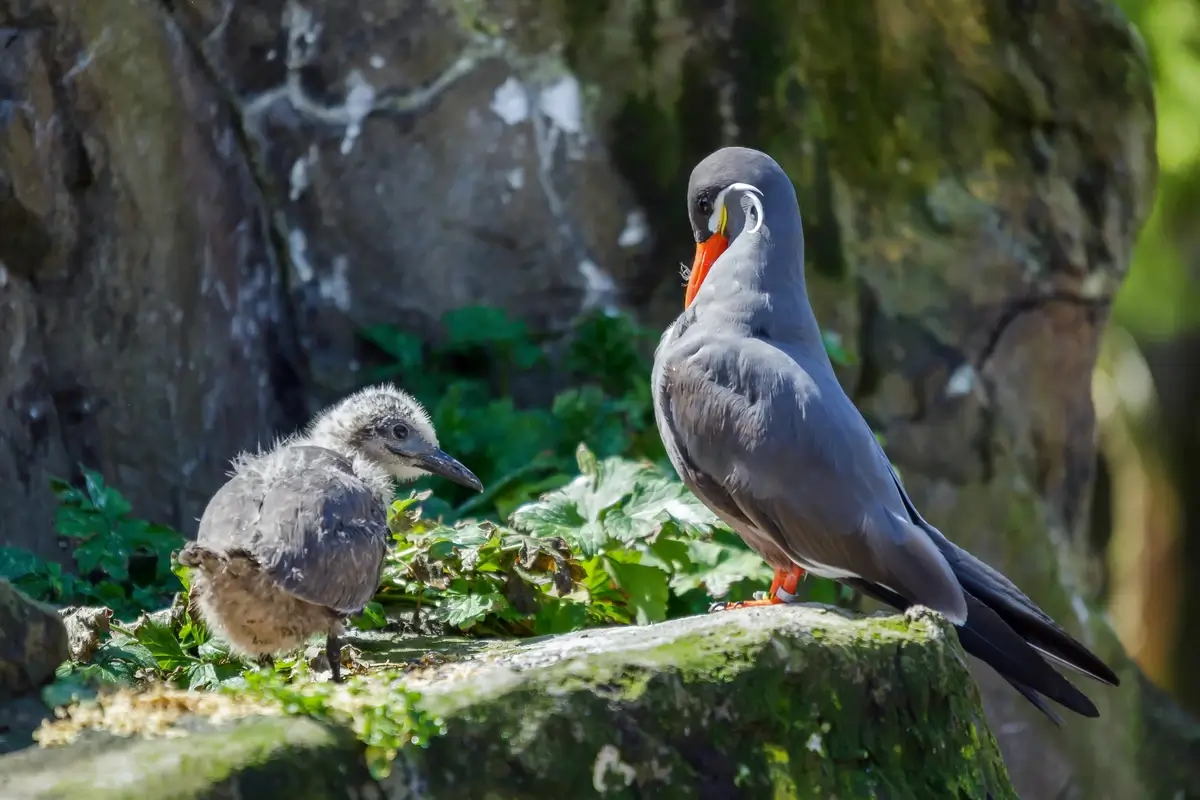
Philip Bird / Vecteezy
7. Lifespan of Inca Terns
Inca Terns have a surprisingly long lifespan for birds of their size, living up to 15-20 years.
Research in the late 20th century revealed that their longevity is linked to their adaptive foraging habits and predator avoidance strategies.
Their extended lifespan allows for longer breeding periods and contributes to the stability of their populations, crucial in the face of environmental changes.
8. Mating Rituals of Inca Terns
The mating rituals of Inca Terns are complex and involve elaborate displays and vocalizations.
First observed in detail in the early 1900s, males perform intricate aerial displays and present fish to potential mates as part of courtship.
These rituals are crucial for pair bonding and ensuring the selection of a suitable mate, impacting the genetic strength and survival of their offspring.
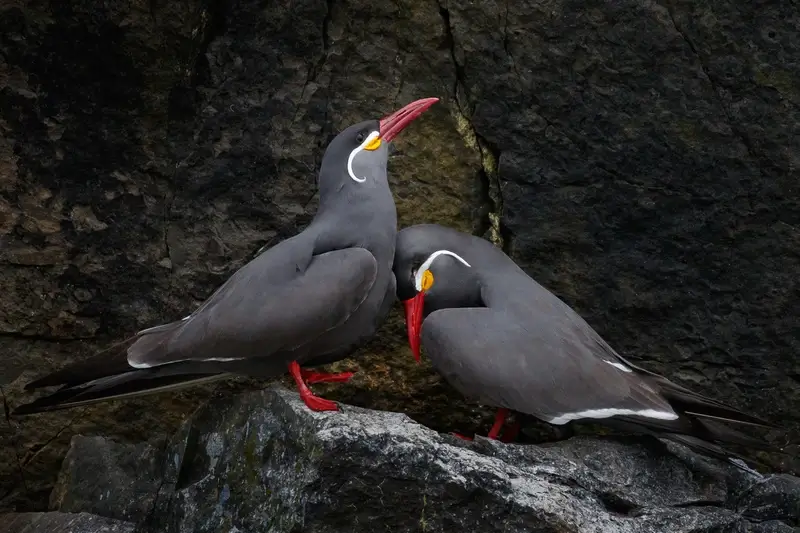
Image: featherlightphoto.com
9. Aerodynamics in Inca Tern Flight
Inca Terns exhibit remarkable flight abilities, combining speed with agility.
Studies in aerodynamics, initiated in the mid-20th century, show how their wing structure and feather arrangement enable efficient flight and diving.
Their flight mechanics are not just a marvel of nature but also provide insights into the principles of aerodynamics, applicable in designing better aircraft.
10. Inca Terns as Ocean Health Indicators
Inca Terns are considered vital indicators of ocean health.
Their population trends and breeding success, closely monitored since the 1980s, reflect the abundance and health of marine life, particularly small fish like anchovies.
Fluctuations in Inca Tern numbers often signal changes in ocean conditions, serving as a warning for potential ecological issues.
Their role as bioindicators is crucial in marine conservation efforts and climate change studies.
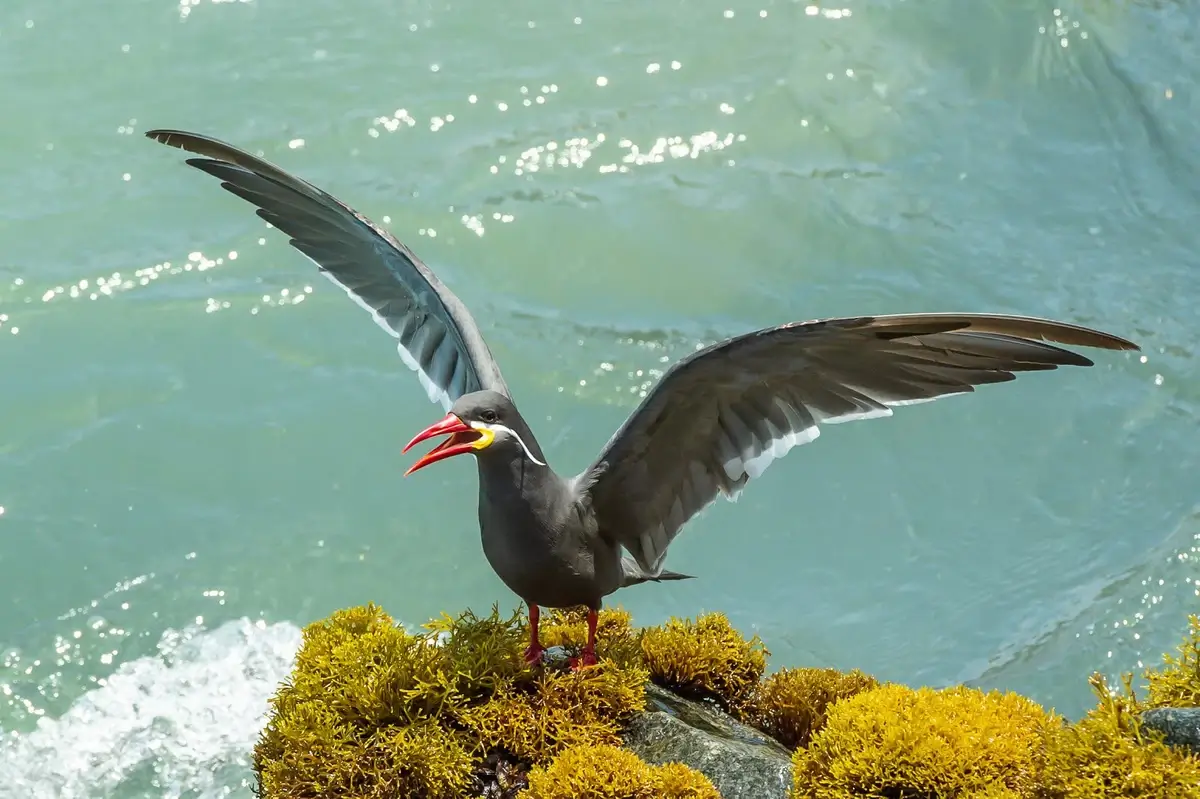
Image: northantsbirdclub.blogspot.com
11. Social Structure of Inca Tern Colonies
Inca Terns are highly social birds, forming large colonies for breeding and nesting.
Observed since the early 1900s, their social structure is complex, involving cooperative behaviors and communal nesting.
These colonies provide safety in numbers and are essential for the social development of young terns.
Understanding their social dynamics helps in the conservation and management of their natural habitats.
12. Conservation Challenges for Inca Terns
Inca Terns face several conservation challenges, primarily due to habitat loss and climate change.
Since the late 20th century, overfishing and pollution have also impacted their food sources and nesting sites.
Conservation efforts focus on protecting their coastal habitats and ensuring sustainable fishing practices.
Raising awareness about these challenges is crucial for the preservation of this unique species.
13. Exceptional Vision of Inca Terns
The exceptional vision of Inca Terns is key to their survival.
Their sharp eyesight, adapted for spotting prey from high altitudes, has been a subject of study since the early 2000s.
This visual acuity is essential for their intricate hunting techniques and navigating their marine environment.
Research on their vision provides insights into avian sensory adaptation.
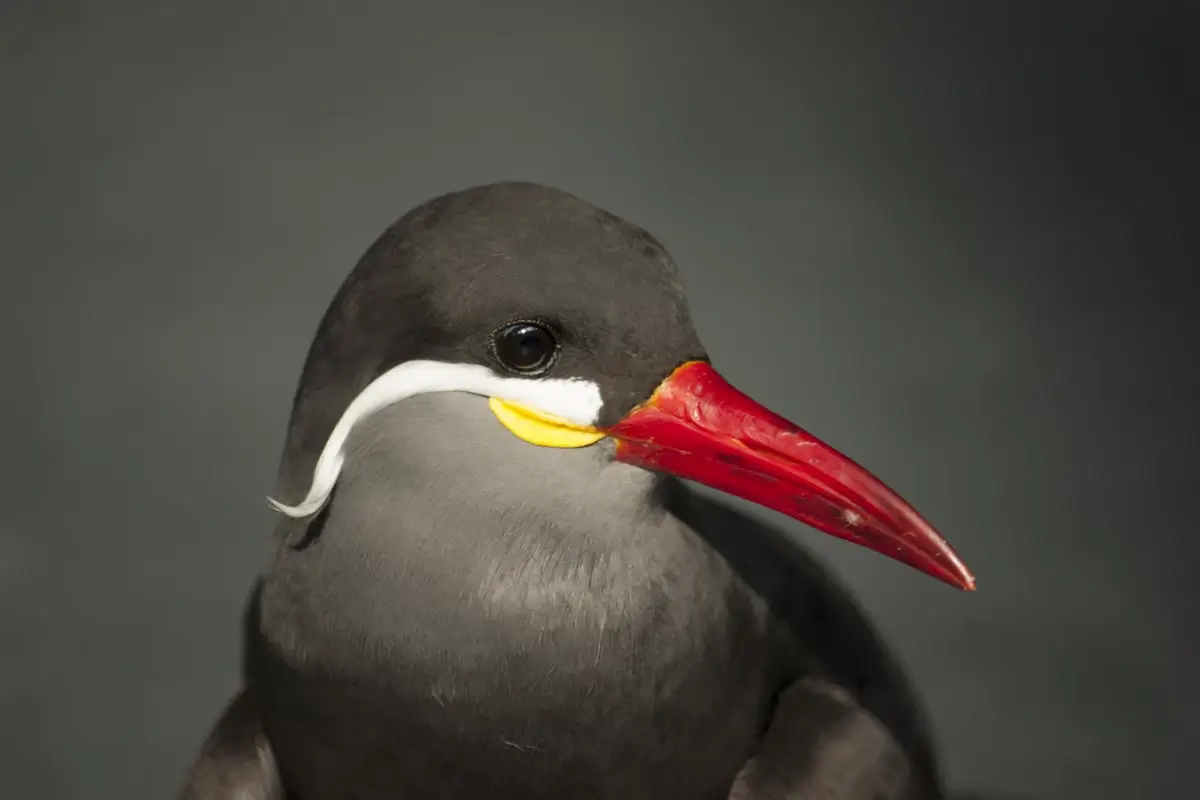
Kitty Terwolbeck / Flickr
14. Inca Terns in Art and Mythology
Inca Terns have a notable presence in local art and mythology.
Since their discovery, they have been depicted in various forms of South American art, symbolizing freedom and the spirit of the ocean.
In local folklore, they are often seen as messengers between the sea and the sky.
Their cultural significance highlights the connection between humans and nature.
15. Recent Research on Inca Terns
Recent research on Inca Terns focuses on genetic diversity and climate change impacts.
Studies conducted in the 21st century aim to understand how environmental changes affect their breeding and migration patterns.
This research is critical for developing strategies to protect them against the growing threats of climate change and habitat alteration.
FAQ
What is the lifespan of the Inca tern?
The lifespan of the Inca tern is notably long for birds of its size, averaging between 15 to 20 years. This longevity is attributed to their efficient foraging strategies and effective predator avoidance techniques. Their long lifespan allows for extended breeding opportunities and contributes to the stability of their population.
Do Inca terns mate for life?
Inca terns do not typically mate for life. They are known for forming monogamous pairs for a breeding season. However, these pair bonds may not last beyond a single season. Each year, they may choose different partners for breeding, a common trait among many seabird species.
Is the Inca tern endangered?
The Inca tern is currently listed as a species of “Least Concern” by the International Union for Conservation of Nature (IUCN). Despite this status, they face several threats, including habitat loss, climate change, and the impacts of overfishing on their food sources. Continuous monitoring and conservation efforts are essential to maintain their population stability and to address these environmental challenges.
What is the behavior of the Inca tern?
Inca terns are highly social birds, known for their complex and interactive behaviors. They live in large colonies, especially during the breeding season. These birds are vocal, using a range of sounds for communication within their colonies. Their behavior also includes skillful hunting and diving for fish, and intricate courtship displays during the breeding season.
What are the characteristics of the Inca tern?
The Inca tern is distinguished by its slate-grey body, white moustache-like feathers on its face, and red-orange beak and feet. These birds are medium-sized terns with a wingspan of approximately 50 cm. They are agile fliers, adapted to their coastal habitats. The unique moustache-like feathers, which develop as the birds mature, are a key characteristic of this species.
What does Inca tern eat?
The diet of the Inca tern primarily consists of small fish, with a particular preference for anchovies. They are also known to eat crustaceans and small invertebrates. Inca terns employ a hunting technique involving high-velocity dives from the air into the water to catch their prey, showcasing their agility and precision.


